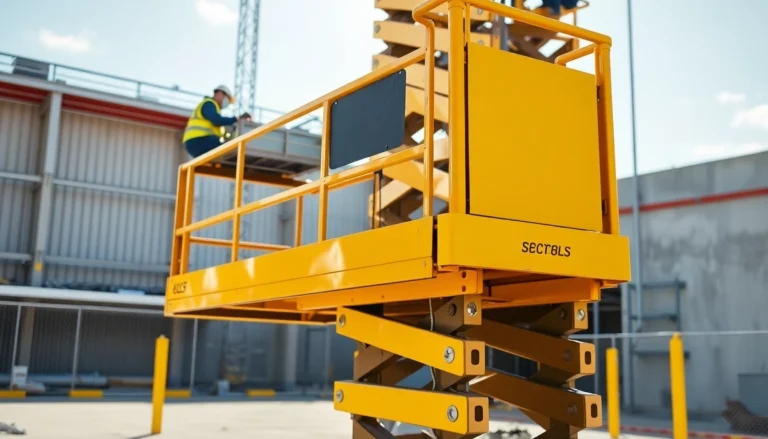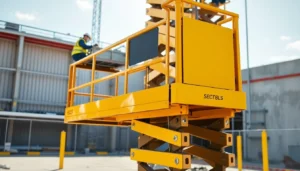Understanding Dumper Rental: Types, Benefits, and Usage
In the fast-paced world of construction, landscaping, and material handling, efficiency and flexibility are essential for project success. One of the most versatile pieces of equipment used across various industries is the dumper. Whether you’re managing a small renovation or a large-scale infrastructure project, understanding the nuances of dumper rental can significantly enhance your operations, optimize costs, and improve overall productivity. This comprehensive guide explores the different types of dumpers available for rent, their benefits, practical applications, and tips for selecting the right equipment tailored to your specific project needs.
Different Types of Dumpers Available for Rent
Mini Dumpers
Mini dumpers are compact, versatile machines designed for tight spaces and projects requiring precision maneuverability. Typically ranging from 0.25 to 1.5 tonnes in capacity, these machines are ideal for small to medium tasks such as garden landscaping, small building extensions, and internal site work. They often feature swivel skips or tipping beds that facilitate easy unloading in restricted areas, making them a popular choice for urban environments or confined job sites. Top rental providers often stock models that are lightweight yet robust, capable of handling diverse materials like soil, gravel, and demolition debris.
Micro Dumpers
Even smaller than mini dumpers, micro dumpers usually have a capacity of around 0.2 to 0.5 tonnes. They are specifically designed for narrow doorways and tight access points, often capable of passing through standard doorways or gateways. Thanks to their compact size and agility, micro dumpers excel in indoor or indoor-outdoor projects, such as basement renovations or internal site work where space is limited. Their ability to operate on uneven or wet ground conditions makes them invaluable for challenging terrains.
Skid Steer and Track Dumpers
Larger than mini and micro variants, skid steer dumpers and tracked dumpers typically range from 1 to 3 tonnes. They are suited for more substantial construction tasks, including excavation, site clearance, and bulk material transportation. Their tracked versions offer enhanced stability and traction on rough or muddy terrain, making them suitable for outdoor construction sites. Rental options often include articulated dumpers capable of traversing steep inclines or unstable ground with ease.
High Tip and Forward Tipping Dumpers
Heavy-duty models designed for larger loads and industrial applications, high tip and forward tipping dumpers provide efficient unloading by tilting the skip forward or high into the air. These are ideal for large construction sites, quarry operations, and infrastructure projects where rapid material transfer is essential. Their large capacity, often exceeding 3 tonnes, enables quick cycle times, reducing operational delays.
Specialized Dumpers
Many rental providers also offer specialized dumpers, such as petrol-powered models for indoor use, electric dumpers for environmentally friendly operations, and articulated dump trucks for heavy-duty projects. These options allow for tailored solutions based on project specifications, environmental considerations, and operational constraints.
Key Advantages of Renting a Dumper for Your Project
- Cost-Effectiveness: Renting equipment eliminates the high capital expenditure of purchasing and maintaining machinery. It allows access to the latest models and technology without ongoing investment.
- Flexibility: Rental options enable you to select the exact type, size, and capacity of dumper suited for each phase of your project, scaling operations up or down as needed.
- Maintenance and Support: Reputable hire companies handle the maintenance, repairs, and servicing of the equipment, reducing downtime and operational disruptions.
- Access to Advanced Equipment: Rental firms regularly update their fleet, providing access to newer, more efficient, and safer models that may not be affordable otherwise.
- Reduced Storage and Disposal Hassles: Renting means you only pay for what you need when you need it, avoiding storage costs and disposal issues associated with unused equipment.
A strategic rental approach not only ensures optimal operational efficiency but also aligns with budget constraints and project timelines, especially critical in competitive construction environments.
Common Applications and Industries Using Dumpers
Construction and Civil Engineering
Construction sites frequently rely on dumpers for transporting bulk materials such as sand, gravel, crushed stone, and demolition debris. Their ability to operate in confined spaces while offering high payload capacity streamlines site logistics and prevents bottlenecks.
Landscaping and Garden Design
Landscapers utilize mini and micro dumpers for moving soil, mulch, and plant materials efficiently within limited spaces. Their maneuverability allows for precise placement, reducing manual labour and time.
Agriculture and Farming
On farms, dumpers facilitate the movement of feed, manure, and harvested crops, enhancing productivity in rugged or uneven terrains.
Industrial Facilities and Warehousing
Indoor and outdoor warehouses employ electric or petrol dumpers for quick loading and unloading, improving workflow in tight or congested areas.
Quarrying and Mining
Heavy-duty dumpers transport extracted materials, often on rough terrains, playing a vital role in the efficiency of resource extraction operations.
Selecting the Right Dumper Rental for Your Construction Needs
Factors to Consider When Choosing a Dumper
Making an informed decision on dumper rental requires assessing several key factors:
- Project Scope and Material Type: Determine the volume, weight, and type of material to be transported to select equipment with appropriate capacity.
- Site Conditions: Evaluate terrain stability, space constraints, and accessibility to choose suitable models (e.g., tracked vs. wheeled, narrow vs. standard width).
- Operational Environment: Indoor, outdoor, wet ground, or steep inclines each require specific dumper features for safety and efficiency.
- Project Duration: Short-term projects benefit from flexible rental packages, while long-term needs may warrant different arrangements.
- Budget Constraints: Match the dumper size and features with available financial resources while maintaining operational effectiveness.
Size, Capacity, and Ground Conditions Compatibility
Selecting a dumper that balances size and capacity with site conditions is critical. For instance, micro dumpers are perfect for narrow pathways, while larger high-tip models suit expansive sites with heavy loads. Always consider whether the ground is firm, wet, or uneven, as this impacts traction and stability—tracked dumpers generally perform better under challenging terrains.
Safety Guidelines and Operational Best Practices
Ensuring safety during dumper operation involves training, adherence to weight limits, and comprehensive site risk assessments. Operators should be proficient in machine controls, understand load limits, and follow manufacturer guidelines. Personal protective equipment (PPE), proper signage, and clear communication channels are vital. Many rental companies provide training or operational manuals—leverage these resources to prevent accidents and prolong equipment lifespan.
Cost, Booking, and Logistics of Dumper Rental
Pricing Structures and Rental Packages
Dumper rental costs depend on machine size, rental duration, and additional services such as delivery, operator hire, or on-site support. Daily rates can vary, with mini dumpers starting from approximately £75 to £150 per day, while larger models may cost upwards of £300 per day. Many companies offer discounted weekly or monthly packages, providing cost savings for extended projects.
It’s essential to request detailed quotes that clarify inclusions, such as fuel, maintenance, and transportation fees, to avoid unexpected costs.
How to Book and Schedule a Dumper Rental
Booking typically involves contacting the rental provider via phone or online inquiry, specifying the required dumper type, rental duration, and delivery location. Early reservation ensures availability, especially during peak seasons. Some providers also offer online booking platforms for convenience and real-time availability checks.
Clear communication regarding delivery times, site access, and operator requirements will streamline the process and minimize delays.
Transport, Delivery, and Pickup Options
Comprehensive rental services include transportation logistics. Most providers deliver the equipment directly to your site and arrange pickup after the rental period ends. Additional charges may apply based on distance or special delivery requirements. Consider logistical aspects such as site access restrictions, ground conditions, and delivery windows to coordinate efficiently.
Maximizing Efficiency: Tips for Using Dumper Rentals Effectively
Preparation and Site Setup for Dumper Operations
Prior to delivery, prepare the site by clearing obstacles, establishing stable pathways, and marking designated routes. Ensuring the ground can support the weight of the dumper prevents potential mishaps or equipment damage. Designate safety zones and ensure adequate space for maneuvering and turning.
Operational Techniques for Safety and Productivity
Train operators on safe operating procedures, including loading, tipping, and navigating uneven terrain. Use clear signaling and maintain communication with ground personnel. Keep within load limits to prevent tipping or mechanical failure. Regularly inspect the dumper for signs of wear or damage during operation, and adhere to manufacturer guidelines.
Maintenance and Post-Rental Care for Longevity
After each use, perform basic cleanup and leak checks. Report any damage to the rental provider promptly to avoid penalties. Proper storage of the equipment, especially during off-hours, preserves its operational integrity and ensures readiness for future use.
Performance Metrics and Case Studies on Dumper Rental Effectiveness
Measuring Project Efficiency Improvements
Implement key performance indicators (KPIs) such as cycle times, fuel consumption, and downtime occurrences to evaluate the impact of dumper rentals on project timelines and costs. Comparing metrics before and after dumper utilization helps quantify efficiency gains.
Real-World Examples of Successful Dumper Utilization
For instance, a UK-based landscaping firm reduced manual labour by 40% and completed projects 25% faster after integrating mini dumpers into their fleet. Similarly, a civil engineering project reported a 15% decrease in overall material handling costs by opting for tailored rental solutions with delivery and support services.
Future Trends in Dumper Rental Technology and Services
Innovations such as electric dumpers, remote operation, GPS tracking, and telematics are shaping the future of equipment rental. These advancements enhance environmental sustainability, operational control, and data analytics, enabling contractors to optimize resource utilization and reduce carbon footprints.











